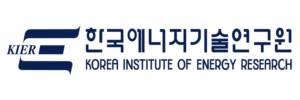

When it comes to ammonia energy & Australia, the persistent theme for a few years now has been exports, exports, exports. But, does a domestic hydrogen & ammonia industry present the opportunity for Australia to move on from a “dig and ship mentality”? Can Australia develop an equivalent of the METS industry, providing the expertise, technology and services required to get more projects up-and-running overseas?
To explore these big questions, we welcome a terrific discussion panel: Cindy Lim (Keppel Infrastructure), Olivia Brace (Advisian), and Tim Rogers (Trafigura Group), and chair Penelope Howarth (Department of Foreign Affairs and Trade). And - in the session before we launch into discussion - we will hear updates from some of our key ammonia energy allies in APAC. Shigeru Muraki (CFAA, Japan), Hyung Chul Yoon (KIER, Korea) and Kashish Shah (IEEFA, India) will dial-in virtually to present the latest from their home countries. Join us in-person or online, and purchase your tickets by this Friday 5 August to secure the extended early-bird rate.
Thirteen private organisations and five public institutions joined together this week to form South Korea's Green Ammonia Alliance. The Alliance's key aim is to work towards carbon neutrality for Korea by 2050.
South Korea has featured in many Ammonia Energy news updates, but often in a scatter gun fashion that lacked the momentum of ammonia energy announcements coming from the other side of the Korea Strait. Now, South Korea is ready to step out from Japan’s shadow as a clean energy innovator and deployer in its own right. We’re seeing the beginnings of a well-articulated strategy to achieve society-wide decarbonisation in South Korea, with a starring role for clean hydrogen and clean ammonia.
Of all the devices that can convert the chemical energy in ammonia to electricity, gas turbines and fuel cells appear to be receiving the lion’s share of development effort, outstripping that devoted to ammonia-fueled internal combustion engines (A-ICEs). An Ammonia Energy review last year found a number of organizations with histories of work on A-ICE technology, but reports of progress have not been forthcoming. It was good news, therefore, when a representative of a newly engaged group appeared at the NH3 Energy+ Topical Conference earlier this month and delivered a talk on an innovative A-ICE “combustion strategy.” Donggeun Lee from the Department of Mechanical Engineering at Seoul National University (SNU) delivered the paper, entitled “Development of new combustion strategy for internal combustion engine fueled by pure ammonia,” on behalf of his co-authors, Hyungeun Min, Hyunho Park, and Han Ho Song.
In the last 12 months ... The research community has made great progress toward solving the "selectivity challenge" in electrochemical ammonia synthesis. Although, rather than an actual solution, mostly what we have is a range of sophisticated work-arounds that succeed in making this problem moot.
One of the many encouraging announcements at the recent Power-to-Ammonia conference in Rotterdam was the news that the Korea Institute of Energy Research (KIER) has extended funding for its electrochemical ammonia synthesis research program by another three years, pushing the project forward through 2019. KIER's research target for 2019 is significant: to demonstrate an ammonia production rate of 1x10-7 mol/s·cm2. If the KIER team can hit this target, not only would it be ten thousand times better than their 2012 results but, according to the numbers I'll provide below, it would be the closest an electrochemical ammonia synthesis technology has come to being commercially competitive.
Ammonia energy proponents look forward to the day when their fuel is used in internal combustion engines – but the state of this art is unsettled and it is not clear which combustion technologies will win in the end.
South Korean researchers have successfully road-tested a dual fuel passenger car that runs on a mixture of ammonia and gasoline. It is called the AmVeh and was developed by members of the Ammonia Research Group at the Korean Institute for Energy Research. The prototype vehicle uses a fuel ratio of 70% ammonia to 30% gasoline to power a spark ignition engine. As ammonia contains no carbon, this fuel ratio results in a corresponding 70% reduction in carbon dioxide emissions, compared to pure gasoline. The AmVeh team is now focused on improving the fuel system and the exhaust after-treatment system. Once these are optimized, they aim to develop an engine system that runs on ammonia alone, without any support from gasoline.